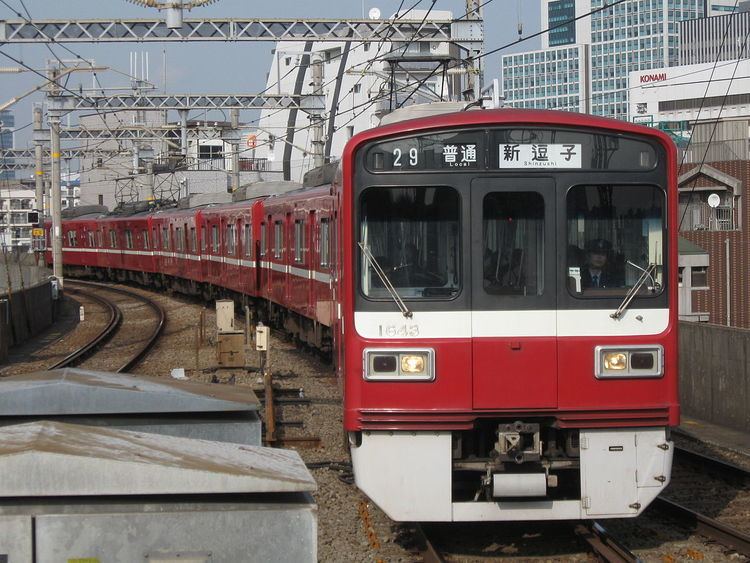In service 1985– Refurbishment 2002– | Constructed 1985–1991 Number in service 166 vehicles (28 sets) | |
 | ||
Formation 4/6/8 cars per trainset | ||
The Keikyu 1500 series (京急1500形) is an electric multiple unit (EMU) train type operated by private railway operator Keikyu on commuter services in the Tokyo area of Japan since 1985.
Contents
Operations
The 8-car sets are primarily used on limited-stop "Rapid Limited Express" and "Limited Express" services on the Keikyu Main Line, including through-running services to and from the Toei Asakusa Line subway, Keisei Main Line, and Hokuso Line. The 4- and 6-car sets are mostly used on all-stations "Local" services. The 1500 series sets can be used in multiple with other Keikyu EMU types, including the 600 series, N1000 series, 2000 series, and 2100 series.
Formations
As of 1 April 2012, the fleet consists of 166 vehicles formed as 4-car, 6-car, and 8-car sets, as follows.
4-car sets 1501 to 1525
6-car sets 1529 to 1649
11 x 6-car sets formed by adding two 1900 trailer cars to 4-car sets.
6-car sets 1533 to 1549
8-car sets 1701 to 1731
6 x 8-car sets formed by adding two 1900 trailer cars to 6-car sets.
Interior
Passenger accommodation consists of longitudinal bench seating throughout.
History
The 1500 series fleet was built between 1985 and 1991. The first five 4-car sets delivered had steel bodies, while all subsequent sets had aluminium bodies with door pocket windows discontinued. Sets built from 1990 onward used VVVF control.
A programme of life-extension refurbishment commenced in 2002. This involved adding new air-conditioning units, removing the original door pocket windows of the steel bodied cars, and adding front-end skirts.
